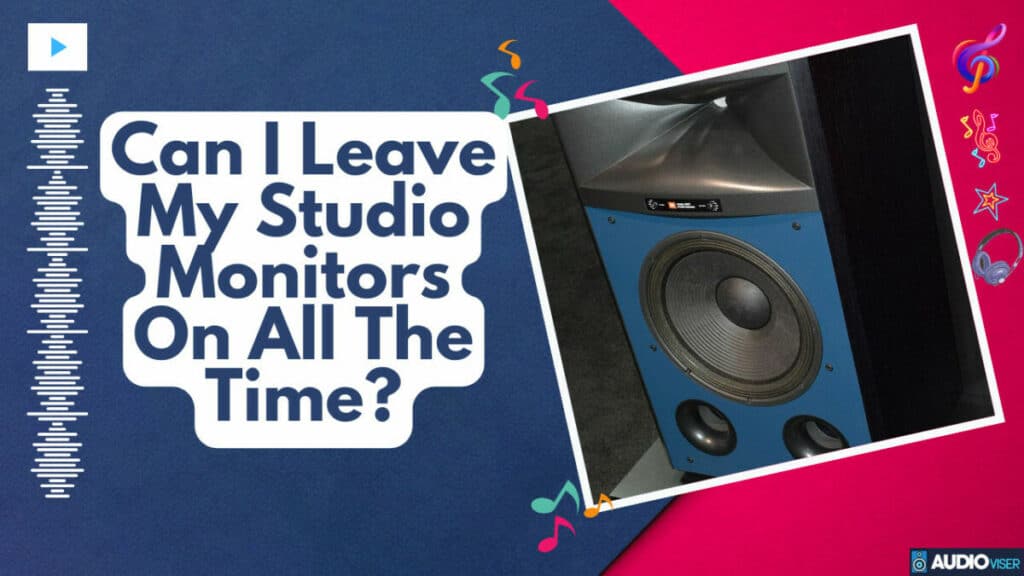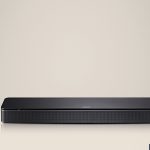So, you’re on this crazy journey towards the ultimate sound experience, right?
But there’s this nagging question that’s bugging you – “Can I leave my studio monitors on all the time?”
You’re tossing and turning in bed, thinking about things like power bills, how long your gear will last, and even the impact on the environment.
Well, no worries. We’re about to dive headfirst into the world of studio monitors and get to the bottom of this.
Get ready to swap out your doubts for cold, hard facts.
The Impact of Continuous Use on Studio Monitors
Keeping your monitors on all the time? Bad idea. It’s not just about the electricity bill, though that’s definitely a factor. It’s also about how long your gear is gonna last. Keeping it on for too long can cause it to overheat, and that can lead to some serious damage.
You’re better off turning them off when you’re not using them. Not only will this save you some cash in the long run, but it’ll also keep your gear in top shape. Remember, treating your studio equipment right means it’ll treat you right, giving you the best sound quality possible.
Let’s break down these impacts and see what’s really going on.
Wear and Tear Effects
Over time, if you keep your studio monitors running non-stop, it’s bound to take a hit. All that heat building up from never-ending use can mess up the internals, making them less effective and cutting their life short. The way you position your monitors can make a huge difference in handling this heat issue. Placing them too close to walls or anything that radiates heat isn’t a good idea. Instead, give them some breathing room, and you’ll see the risk of overheating drop.
But dealing with heat isn’t just about where you put your monitors. It’s also about keeping an eye on their operating environment. You gotta make sure the spot you picked for your monitors is cool and dry, that’s where they’ll work their best. And using a surge protector is a smart move to keep the power supply in check and manage those heat levels.
Bottom line, your gear deserves good care. So, don’t just leave your monitors running round the clock; handle them with care, and they’ll serve you well.
Energy Consumption Impact
Leaving your monitors on 24/7 is a serious power hog, not to mention it’s like throwing your cash straight down the drain. It’s all about being smart with your resources when it comes to running your studio. The lifespan of your monitors? Well, it’s not just about the quality, but also about how you handle them.
Keep in mind, every hour of unused power is not only hitting your wallet but it’s also ticking off your monitors, potentially chopping off their lifespan. So, play it smart with your studio management and you’ll not only be saving your monitors but also your hard-earned money.
Sound Quality Degradation
Listen up, it’s not just about burning a hole in your pocket with crazy power bills, it’s also about the toll it takes on the sound quality of your gear. Imagine this, your studio monitors are left on 24/7, they’re bound to suffer some wear and tear over time, right? And that’s when you start to lose that sweet, sweet audio fidelity – the sound starts to lose its crispness and clarity.
And don’t even get me started on the effect on your surround sound. It’s like a team, each speaker chipping in to give you that mind-blowing, immersive audio experience. But if even one speaker starts to lose its mojo because of overuse, it’s like the whole team’s game just goes down the drain. You’ll start to notice that the sound field is no longer as enveloping as it used to be and the distribution of audio cues is just all over the place.
Analyzing the Effects on Power Consumption
Just a quick heads up about your power bill. You might’ve noticed a bit of a spike if you’re always leaving your studio monitors on. Not only can it cause a dent in your wallet, but it could also impact the longevity of your equipment and mess with your sound quality.
Here’s the lowdown on why this happens:
- Energy guzzlers: We’re talking about those top-notch monitors you’ve got. They’re great for sound, but man, they sure can eat up power like there’s no tomorrow! This constant power trip can really crank up your electricity costs.
- Aging gear: Constant power cycling can be pretty tough on the internal bits and pieces of your monitor. Over time, this could mean a shorter lifespan for your gear.
- Noisy nuisances: Having your monitors on 24/7 can lead to what we call ‘electrical noise’. This can mess with your audio and compromise the quality of your sound.
To cut a long story short, it’s a smarter move to switch off your monitors when they’re not needed. It’ll save you some cash and help your gear last longer. Plus, it’ll keep your sound crisp and clear.
After all, who doesn’t like a win-win situation, right?
Environmental Implications
Alright, let’s talk about the green side of things. You know, when you’re jamming on your gear non-stop, there’s more to it than just draining your bank account and wearing out your equipment. There’s a whole environmental angle to think about. Every smidgen of electricity you use nudges up your carbon footprint – that’s the amount of greenhouse gases you’re personally responsible for kicking out. Even your small studio monitors count in this.
Lucky for us, there are ways to ease up on Mother Earth. Go for the earth-friendly alternatives. Look for gear that’s energy-efficient or has a standby mode. These bad boys cut down on electricity use without skimping on performance. Plus, there’s always the classic move: just switch off your stuff when you’re not using it. Easy peasy.
And speaking of monitors, have you ever wondered if studio monitors can be used sideways? Or perhaps, if they can be used as TV speakers? And for the gamers out there, there’s even the question of using studio monitors for gaming. All interesting thoughts to consider in your sound journey.
At the end of the day, it’s not just about saving a few bucks or making your gear last longer. It’s about doing your part for the planet. Get mindful about how much juice you’re pulling for your studio and you’ll be taking solid steps towards shrinking that carbon footprint of yours.
Maintenance Tips for Prolonged Monitor Lifespan
Alright, let’s dive right in and talk about how you can keep your studio monitor kicking for as long as possible with some good old fashioned TLC.
First off, let’s talk about where you’re putting your monitor. You’ll want to keep your screen away from walls and corners to avoid it getting too hot and messing with the sound distribution. Think of it as giving your monitor its own personal space.
Next up, we’ve got temperature control. You wouldn’t want to hang out in a place with crazy temperature swings, right? Same goes for your monitor. Keeping it out of extreme temperatures can stop any internal damage caused by parts expanding and shrinking.
Now, let’s spice things up with a few more tips:
- Make dusting your monitor a regular thing. Just like how dust bunnies under your bed can cause problems, dust on your monitor can mess with sound quality and cause overheating.
- Don’t push your speakers too hard. If you’re constantly cranking them to the max, you’re just asking for them to wear out sooner.
- Keep an eye on your cables. If they’re looking a bit worse for wear, it could put unnecessary stress on your equipment.
Conclusion
Sure, you’re technically able to keep your studio monitors on all the time – no one’s stopping you. But let’s think about this for a sec, shall we? Constant use means they’re gonna get worn out faster, not to mention the spike in your energy bill – yikes! And let’s not forget about our dear old planet. Keeping the green in mind, it’s worth considering that every bit of power saved counts.
Now, I’m not saying you should be obsessing over the power button, but a little love and care can do wonders in prolonging your monitor’s lifespan. Most pros would suggest giving them a break when you’re not using them. At the end of the day though, it’s up to you. Just be savvy about it, think responsibly, and make a choice that’s not only good for your equipment, but also for our environment.
Remember, it’s not just about the here and now – it’s about the long game. Your studio, your rules. Just make sure they’re smart ones!
Equipment Tester & Reviewer
I’m an unbiased audio equipment tester & reviewer, dedicated to keeping you up-to-date on the latest and greatest in audio gear.











